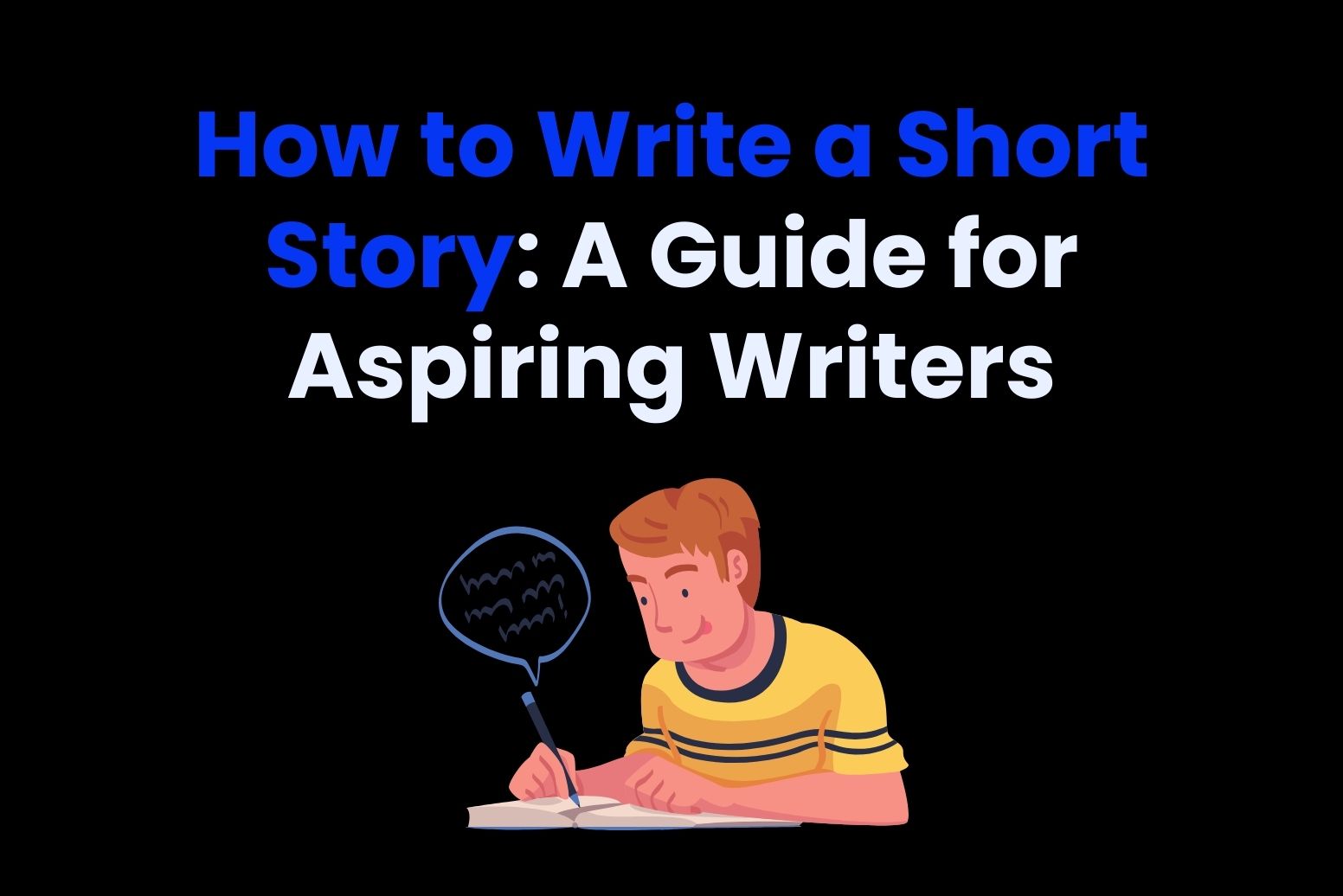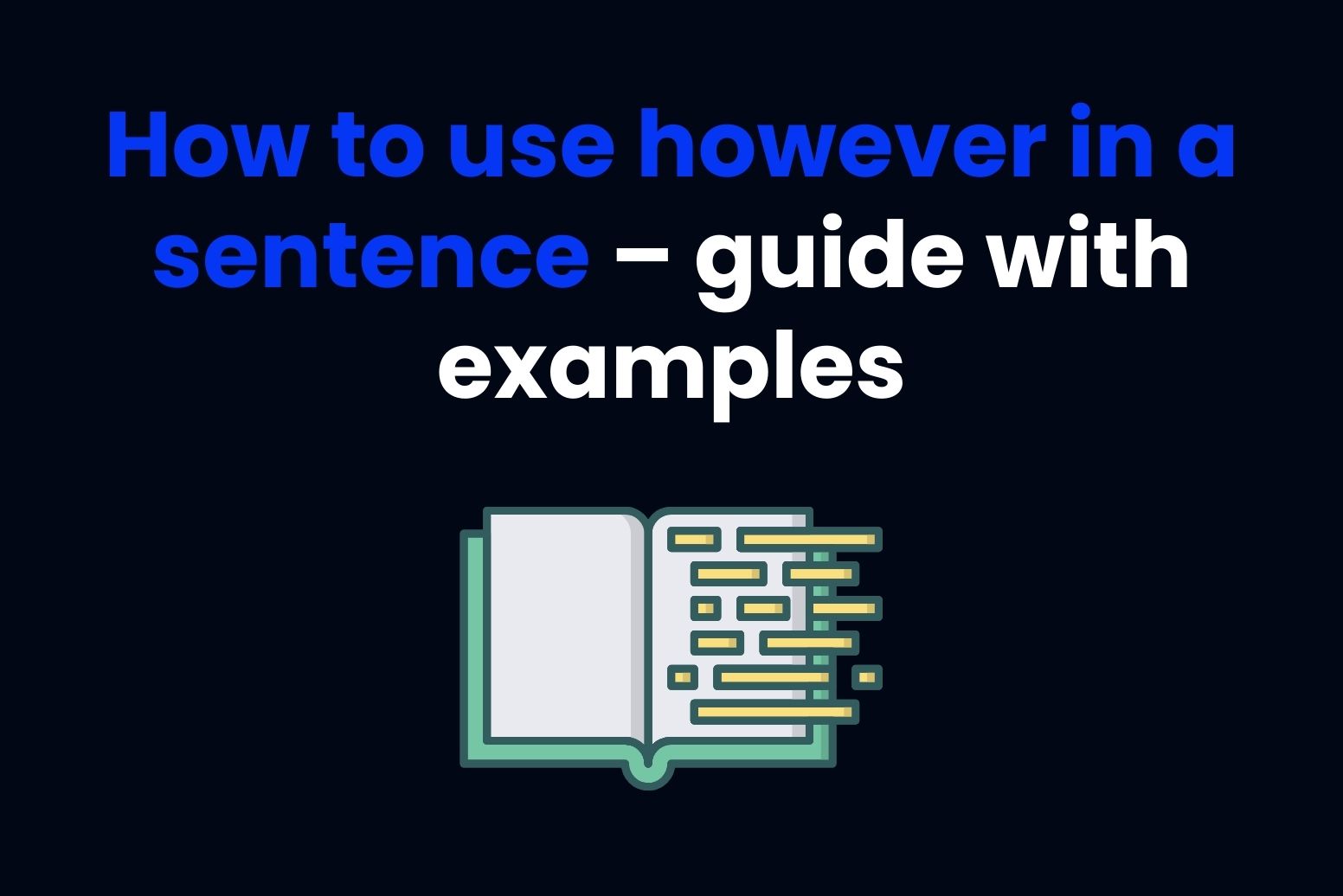Short story writing is an art of telling interesting stories within a limited area. Novels let the writer explain large worlds and several events, whereas short stories require skillful and precise management of narrating techniques. Literature short stories like snapchat have always occupied important ranks in the world of literature they provide alternative opportunities for young writers to perform. In the next article, the author will explain the foundations on which a short story is based, how to select an appropriate idea for the short story, and how to write a short story is in general. We will also look at how you can review AI writing tools such as Arvin AI to fashion an excellent writing style.
What is a Short Story?
The short story is a work of fiction, generally between 1,000 and 20,000 words in length. Unlike novels, which may have the luxury of extended narrative arcs, a how to write a short story attempts to present an experience that is whole within strict confines. In the context of a how to write a short story, every aspect should collaborate for a coherent effect. Its aim is to make one feel a particular emotional or intellectual response; its forte is brevity.
Key Elements of a Short Story
The elements that make up the foundation of a short story work together to create it. These elements include:
- Plot: The series of events that drives the action of the story. In the case of a how to write a short story, the plot is less complex and usually focuses around one central event or conflict.
- Character: The main character or characters (main and sometimes antagonist) around whose actions and decisions the story revolves. Characters in a short story are generally more focused and compact than those of longer works.
- Setting: The time and location in which the story takes place. The setting of a how to write a short story is usually minimal but selected with care so as to reinforce the story’s theme or conflict.
- Conflict: The main fight or problem that the protagonist needs to confront. Conflict may be external, such as against another character, or internal, such as a personal dilemma.
- Theme: The underlying message or the central idea of the story. The theme tackles more profound questions about human nature, morality, or society, and is often subtly shown through the plot and characters.
Differences Between Short Stories and Other Forms of Fiction
The short story, the novel, and the novella are different forms of fiction, each distinguished by structure, scope, and depth. A how to write a short story is a self-contained narrative, usually dealing with a single theme or event. A novel usually involves more than one subplot and in-depth character development over a greater period of time and words. Novellas fall between short stories and novels in terms of length. Because of their length, they allow more development than a short story but are more focused than a full-length novel.
The Impact of Brevity on Storytelling
One of the defining characteristics of a short story is its brevity. The limited word count challenges the writer to be concise, ensuring that every detail and character action serves a purpose. This makes short stories an excellent exercise for developing a writer’s ability to create focused, impactful narratives that can leave a lasting impression.
Choosing the Right Idea for how to write a short story
Choosing an idea for your how to write a short story is critical to its success. An excellent idea for a short story should be simple enough not to overflow the framework of the story and, at the same time, not too thin to allow the addition of depth and emotion. Brainstorm ideas that excite you, from experiences, observations, or imaginings.
Using Life Experiences as Inspiration
Life experiences can be a great wellspring for your short story. Draw from your own life: an emotional experience, a major event, or a decision that was difficult to make. These personal experiences can provide a foundation for your story, offering authenticity and emotional depth. Besides, the use of real events may help in creating characters and situations that seem real. Finding Inspiration in Dreams and Current Events
Dreams can be something of an ultimate source of materials in creating short stories. Mostly, a dream presents strange scenarios and surreal situations that tend to induce innovative ideas for telling stories. Current events and societal issues can indeed form other inspirations wherein you have the opportunity to engage and present relevant topics with real conflicts that readers empathize and identify with.
Creative Exercises to Spark Ideas
If you are having trouble getting ideas, there are a few creative exercises that can help spark the fires of imagination. Writing prompts are a great way to get the creative juices flowing. These can be simple: a sentence that must be used, an image, or a scenario around which you need to build your story. Free writing is another effective method in which you write continuously for a set amount of time without concern for structure or grammar.
Building Compelling Characters
In every novel, characters are the central point, but in short stories, they play an even more crucial role. Limited by space, a good character is essential to bring readers into the story and take them with it. It is necessary that the reader identifies with, or at least understands, the reason behind the acting of a character, when there’s not enough room for prolonged backstory.
Techniques for Creating Memorable Protagonists and Antagonists
To build up memorable protagonists, focus first on their core desires or goals. What is driving them? What do they want, and what stands in their way? Protagonists are more interesting when they have motivations and weaknesses. As for antagonists, try giving them their own desires or justification for what they do; this can make them multidimensional rather than flat.
Character Development in a Short Amount of Space: Focus on One or Two Key Traits
In a short story, of course, the development of the character has to be concise. Instead of creating a fully fleshed-out character with a long history, focus on one or two key traits that shape their decisions. A person’s need for revenge, fear of failure, or an unshakeable belief in something can serve as the anchor for their development. These defining traits should influence their interactions with others and drive the plot forward.
Dialogue, Actions, and Thoughts That Reveal Character Personality
In short stories, dialogue, actions, and internal thoughts should all work together to reveal a character’s personality. Instead of lengthy descriptions, let the character’s speech and actions speak for themselves. A terse, blunt character might communicate with short, clipped sentences, while a more open, emotional character might share their innermost thoughts more freely. Pay attention to how characters react in certain situations—action often speaks louder than words in revealing who they truly are.
Crafting the Plot
A structured storyline is as crucial in a how to write a short story as it is, though in a more cramped version, in any form of narration. Begin by introducing the setting and one main character and his/her world. The rising action builds up the conflict and increases the tension to a climax, which is the most intense part of the story. The falling action resolves the conflict, and the resolution ties up loose ends.
Creating Conflict and Tension
It can be from without, as in the antagonist or the societal expectation; it may be within him, with a moral or personal problem. In the how to write a short story, conflict needs to be introduced pretty early and should be developed rather fast. There is tension created by conflict, which should rise until a resolution or climax that is satisfying. The secret to tension is clarity about what the stakes are, urgency about it, and how these prompt characters to take some real action.
Importance of a Clear Narrative Arc, Even in Short Form
The string of a clear narrative arc, even within a how to write a short story, is very vital to sustain coherence. The arc is the path that the character follows both in external events of the plot and in the growth or change he undergoes. Unless there is an arc, the readers cannot connect to the story, no matter how interesting the events may be. A structured arc would ensure that the story is purposeful and has some sense of completion, though not necessarily an epic journey.
How to Incorporate Twists, Surprises, and Strong Conclusions
Twists and surprises can work well in keeping readers gripped, but they do need some foreshadowing and must be done subtlety. In the how to write a short story, there’s no room for long-drawn build-ups, and hints need to be strategically placed to make the reader pay closer attention to details. The twist or surprise fits with themes or character arcs that were established throughout your story and thus feels earned to the reader. A strong conclusion brings closure-possibly an emotional resolution or a provocative ending, one that might leave readers reflecting on the implications of the story.
Tips for Keeping the Plot Simple and Concise
Given the limited space of a how to write a short story, it’s important not to waste words on subplots. Stick to the main conflict and a small, workable cast of characters. Each scene should be dedicated to either developing the character or to plot advancement. Simplifying the plot doesn’t have to mean it has to be simple-just that everything should be intentional and straightforward, leading to a coherent, satisfying resolution.
Setting and Atmosphere
Setting is very important in the how to write a short story for context and embellishing. Establish the time and place of your story as soon as possible; give the reader only as much information as he needs to place himself in the setting. This might mean just a general description of a place, for example, without detailing everything in the room: instead, notice how one element-a streetlamp flickering on, say, or the musty smell of old books-can set the atmosphere.
Use of Sensory Details to Create Atmosphere and Mood
In short stories, sensory details help immerse the reader in the world you’ve created. Describing the sights, sounds, smells, tastes, and textures of a scene can evoke a strong sense of atmosphere. For example, the crisp scent of autumn leaves, the distant sound of thunder, or the feeling of cold stone beneath a character’s fingertips can immediately transport readers into a specific moment.
Balancing Setting Description with Plot Development
While setting is important, it should never overshadow the plot or the development of the characters. In short stories, there is often little room for extended descriptions, so setting should be integrated naturally into the action. Rather than pausing the story to describe a setting in great detail, weave it into the scenes as the characters move through the environment.
How Setting Influences the Characters and Their Decisions?
The setting of a short story can determine the character decisions and actions in many meaningful ways. For instance, being confined in a small dark room may remind the character of their internal state or drive them to desperate choices. Conversely, an open, sunny field may trigger feelings of hope or freedom. Setting can also influence the character’s interactions with each other, like how a hostile environment might bring out the best or worst in them.
Writing Style and Voice
The type of writing style you will select is one of the most important decisions you will have to make as a writer, since it affects the whole telling of the story and how the readers relate to it. There are three basic writing styles utilized in writing short stories: first-person, third-person, and the more rarely used second-person point of view. Each has its own way of experiencing the narrative; each has its own strengths and weaknesses.
First-Person Narration
First-person narration involves the telling of a story by one character, in the first person, using either “I” or “we.” This type of narration creates a close relationship between the reader and the narrator. It allows readers to witness firsthand the emotions, thoughts, and personal reflections of the protagonist, thus making the readers feel close to the character. This perspective proves to be most effective whenever the story deals with personal transformation or internal conflict because it allows for an immense exploration of the narrator’s psyche.
Third-Person Narration
Third-person narration is more versatile and widely used in short stories. The narrator, who is considered an outsider, describes one or more characters using “he,” “she,” or “they.” Third-person narration can be omniscient, in which the narrator has an all-knowing perspective and is aware of every character’s thoughts, feelings, and motivations. It can also be limited to where the narrator focuses only on the experiences and perceptions of one character.
It allows flexibility in that it can easily switch between a number of different characters, or focus on one while keeping a wider view of the world.
Second-Person Narration
Second-person narration is uncommon and considered to be much more experimental. The reader becomes directly addressed as “you,” which can be alluring to the readers’ active participation in the story. By this method of narration, second-person narration can put a reader through an experience almost firsthand. However, second-person narration is tricky and difficult to sustain with excessive use; it may sometimes begin to feel disorienting or contrived. Creating a Distinct Narrative Voice
Once you’ve chosen your writing style, developing a distinctive narrative voice is key to making your story stand out. The narrative voice refers to the personality, tone, and style with which the story is told. A unique voice will keep readers engaged and give your story character.
Influence of Character on Voice
It would express the personality of either the character or the narrator. A witty or sarcastic character might use humor and play on words; a more serious or introspective one would probably use a formal, reflective tone. In each case, the character’s background, age, and emotional state can further help mold his voice into something authentic and consistent to be part of the narrative style befitting his experience.
Consistency in Voice
Consistency is a very important ingredient in sustaining a distinct narrative voice. Once you hit upon the character’s voice, it should be consistent throughout the story, unless the character changes in some significant way. A jarring shift in tone can disorient readers or snap them out of the emotional texture of the story. Make sure the voice you create serves the character’s arc and the themes of the story, and that any shifts in tone are gradual and organic.
Tips for Editing and Refining Style
Editors provide a critical step in fine-tuning your style and voice. The process of editing polishes the narrative to clarity and impact. Here are some tips to bring your writing forward:
Active vs. Passive Voice
Among the first things that one should look for when it comes to editing a how to write a short story, is the use of active and passive voice. Active voice is more direct and interesting because the subject performs the action in the sentence: She grabbed the book. Passive voice can make a sentence seem indirect or even weak: The book was grabbed by her. In general, it is preferable to use active voice because it makes the action of the sentence more immediate and vivid.
Sentence Structure and Tone
Variety in sentence structure can really make your story more fluid. Mixing short, punchy sentences with longer, more complex ones sets up a rhythm that holds the reader’s attention. Another consideration is the tone of your sentences-formal, informal, conversational, or poetic. The tone should be consistent with the emotions and themes of the story, reinforcing the atmosphere you want to create.
Consistency of Tone
The tone of the narrative voice must fit the genre and emotional beats of the story. A dark, suspenseful story calls for a somber, tense tone, while a comedic piece would want light, playful treatment. The tone should be sustained through the entire work, subtly changing as the plot develops to reflect mood or character changes.
Editing and Revising Your Short Story
Most how to write a short story first drafts are just that-dirty. It is just your skeleton, your beginning where revision becomes the magic maker that helps you get exactly where it is you want your audience to see. Revision tightens the plot, adds life to your characters, and rounds out your prose into articulate maturity. First drafts being bad isn’t anything one must get worked up about because as a writer, an average beginning will not have worked your imagination; so revise them to create a worthwhile whole that resonates deeply among the readers.
Steps in Self-Editing
Self-editing is multilayered. Each layer serves to bring your story from its roughest form closer to being a finished piece of writing. First, cut out superfluous words. Cut your writing with an axe, and lose all phrases that do nothing for your story or weigh it down. Once the text is pared down, start honing the dialogue. It has to either push the story forward or show character development. It shouldn’t be simply two characters having a filler conversation about nothing.
Seeking Feedback from Beta Readers or a Writing Group
When you feel you have finished self-editing, it is a good idea to get some feedback from others. A beta reader or writing group can provide great insight that may elude you. They are able to point out inconsistencies in the story, plot holes, and unclear character motivations. Constructive criticism will be a big part of your revision process to really polish the story. Be open to their feedback and take it to make the story stronger.
Common Mistakes to Look Out For
When revising your short story, be mindful of common mistakes that can weaken the narrative.
Clichés are one of the most frequent pitfalls in writing. Overused phrases or predictable plot twists can make your story feel formulaic. Similarly, plot holes—gaps in the storyline or inconsistencies in the narrative—can confuse readers and detract from the overall impact. Underdeveloped characters can be another problem; make sure each character has a certain dimension and motivation that lead the story through.
Using Arvin AI to Improve Your Short Story Writing
Arvin AI is an advanced AI-powered writing assistant designed to help writers enhance their how to write a short story creation process. Whether you’re brainstorming, structuring, or editing your work, Arvin AI provides valuable support throughout. By offering tailored suggestions, it helps you improve your writing’s clarity, creativity, and flow. Whether you’re a beginner or an experienced writer, Arvin AI can significantly boost your productivity and storytelling quality.
Key Features of Arvin AI:
- AI-powered brainstorming and story structuring: Helps you generate ideas, organize your short story from start to finish, and ensuring a cohesive flow.
- Sentence structure suggestions for clarity: Real-time suggestions to make you’re writing more readable, engaging, and precise.
- Grammar and syntax improvements: It detects grammar issues and corrects them, all while suggesting better phrasing and syntax to make the storytelling smoother.
- Customizable feedback based on genre or style: Tailors suggestions to fit your preferred writing genre or tone, whether it’s suspenseful, romantic, or adventurous.
Steps to Use Arvin AI
Step 1: Create an account with Arvin AI and log in to start your writing project.

Step 2: Type in your story prompts or initial ideas and select your genre or tone preferences.

Step 3: Refine the characters, plot, and dialogue with the suggestions that Arvin AI gives and perfect your story.

Step 4: Revise your story according to AI feedback in terms of improvement in structure, pace, and language.
Step 5: Take a final review copy and export your short story for submission or personal use.

Conclusion
In the end, creating a compelling how to write a short story is in how well one can present a character, pacing, and structure. Tools like Arvin AI can greatly enhance your creative process by providing feedback and suggestions tailored to your genre and style. Avoid common mistakes such as rushing the plot or under developing characters to ensure your story resonates with readers. Keep writing and refining your skills, and don’t hesitate to share your work with others, whether through publications, contests, or online platforms.






